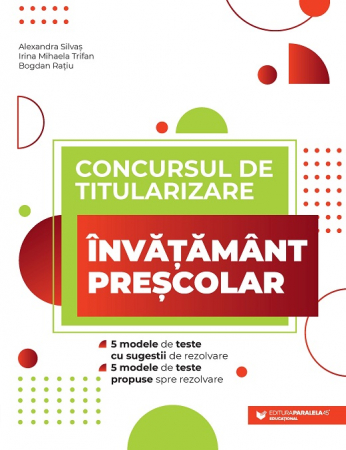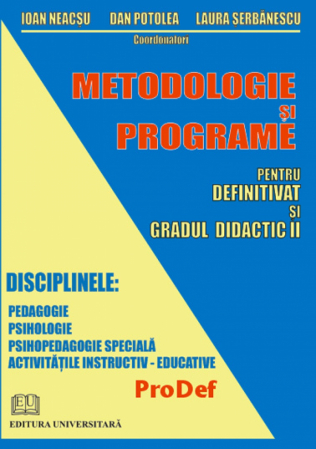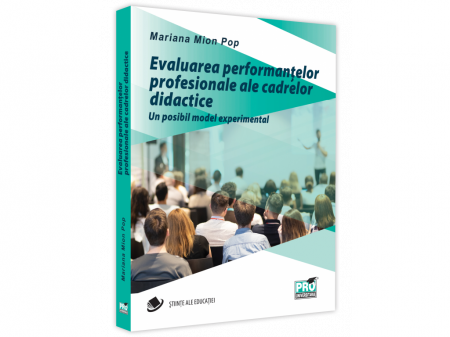ISBN: 978-606-591-301-1
DOI: 10.5682/9796065913011
Publisher year: 2011
Edition: I
Pages: 120
Publisher: Editura Universitara
Author: Petre Anghelescu, Silviu Ionita
- Description
- Download (1)
- Authors
- Reviews (0)
Through this work we want to offer students a guidance on how to choose a theme project, how to define requirements that are applied development steps and how to structure the written material and presentation. We also realize the importance of future engineers on design work and responsibility which it involves. We felt most appropriate to describe these things through some concrete examples, consisting of projects to which degree this paper the authors were guided over several years.However, this paper is a collection of projects "ready" and therefore ought to motivate our approach for the development and publication of such works. The motivation to write this book totally owe our students today whose profile is defined by the information society in transition to the knowledge. It is most convenient to define the profile compared to the contemporary student of the 80s and 90s. Thus, the range marked by the last three decades, our country, as in fact throughout the world, fundamental transitions occurred on three levels: technological, demographic and political. These changes occurred in society even radical mental, methodological and legal. Therefore behavioral profile, social status and career prospects of students today are significantly different than the '90s generation, and especially 80. In the present argument we may ignore the field of study, considering the generic student Bologna. However personal experience requires us to address especially engineering students, and particularly those in computing and information technology and related fields of study.
In our opinion there are three main factors that contribute to students' capacity to develop projects: the practice field and specialized thematic coherence of courses and applications, learning specific design methodologies. These factors have changed over many years, so that generations of graduates went through various periods of reform that influenced the approach to design activities in college. Thus, their objective reasons in the majority now no longer performing students practice uniform and organized industry, as was done in the '80s and early 1990s. The model gave way to a more flexible and institutions apparently simple but actually more difficult to track and quantify: the firm's practice. This way, in general, relieve the responsibility of teachers should follow the practice and tends to formalize the practice, including its evaluation by submitting a certificate rule for making practice.Heterogeneity profile companies, different degree of interest paid by business students, lack of systematic control over the conduct of practice and not least reflected negative evaluation formalism thought engineering students and their ability to develop projects based on actual requirements. Therefore, we must admit that there is a minus from this point of view, especially since, in general, the current curricula does not appear distinct from the training period (from firms or institutions) to develop a diploma project. This can be compensated less but by improving other two factors that depend on the orientation of students to design activities that thematic consistency of training and learning methodologies and application specific design.
The continuous growth of Internet access started in the '90s, marking the transition from "information society" has increased exponentially the possibilities of information and documentation, with priceless effects in academia and beyond.Quick access to various design methodologies at various examples and project ideas and exchange opinions in the forum system generated a new mentality of preparation of projects by students. In contrast, the negative effects were generally manifested by decrease of originality, creativity and personal contribution for the student takeover of projects posted on the Internet.
Other effects are manifested in the present approaches to projects due to computer-aided design environment. Without disputing the overwhelming importance of CAD / CASE in engineering will say only that they should not replace the students' knowledge of the fundamentals of mathematical models and algorithms required for the project. The use of high-level programming environment among students determines the tendency for some superficial knowledge of the structure classes such software, the implementation details of methods, or on the role of libraries included. Algorithmic thinking is generally affected because the student design process tends to integrate predefined program modules, or even worse, taking over the entire existing software applications even without understanding the principles of operation. We could say that such practices are marginal and yet every year we find that our graduates excessive focus on "how" and not "how to".
Most universities in the country have posted on their website guidance, methodologies and guidelines for drafting diploma, targeting both the content and the presentation of the content. However, we find often in excess diploma projects at the expense of descriptive approach to analysis and design solutions. Absence problematizării, General Introduction, which often extended through irrelevant content in the theoretical foundations, followed by an implementation described more in terms of a manual, leading to a formal character, unfortunately found some degree projects. A major role in correcting these deficiencies and trends is guiding teachers.
Today mankind is in full transition of the information society to knowledge society.Student profile of today must evolve morally and professionally to high standards of competence and ethics. From the pedagogical point of view, we consider the most appropriate educational approaches are constructivist, the applied projects and case studies is the development of any university graduate skills.
This paper seeks to help students, teachers and any citizen may appetite for logical rigor and work well done.
Prof. univ. dr. ing. Silviu Ioniţă
Pitesti, September 2011
-
Ghid pentru realizarea proiectului de diplomă. Cu exemple din domeniul Calculatoare şi Tehnologia informaţiei
Download
Petre Anghelescu
Customer Support Monday - Friday, between 8.00 - 16.00
0745 200 718 0745 200 357 comenzi@editurauniversitara.ro
6359.png)
![Guidelines for the diploma project. With examples from the Computer and Information Technology [1] Guidelines for the diploma project. With examples from the Computer and Information Technology [1]](https://gomagcdn.ro/domains/editurauniversitara.ro/files/product/large/ghid-pentru-realizarea-proiectului-de-diplom-cu-exemple-din-domeniul-calculatoare-i-tehnologia-informaiei-1839-799983.jpg)













